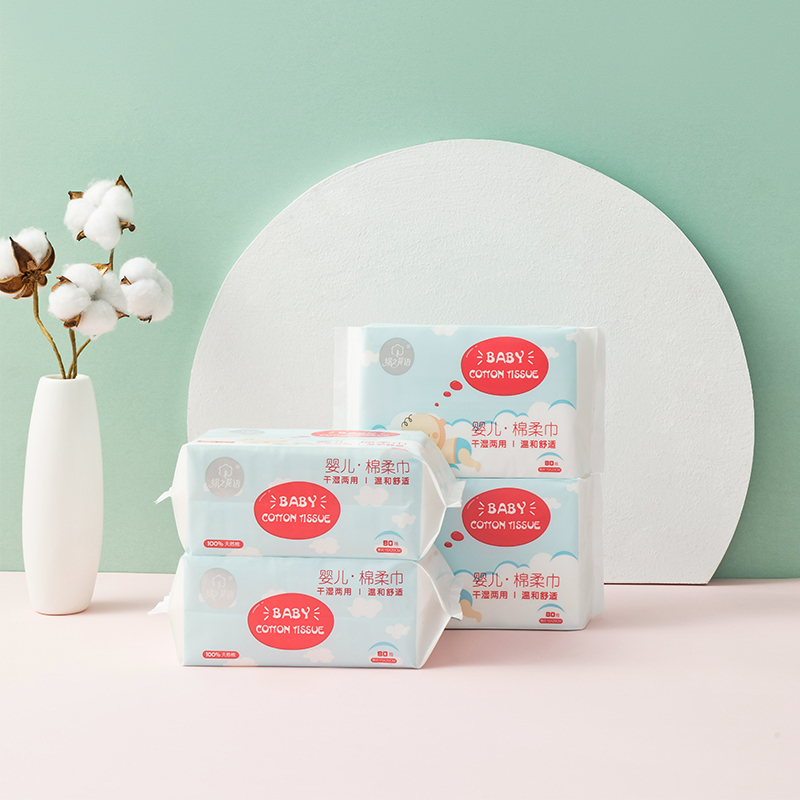Новости
Новости
Какие меры принимаются для снижения воздействия на окружающую среду при производстве хлопчатобумажной продукции для матери и ребенка?
Для снижения воздействия на окружающую среду при производстве товары для ухода за ребенком и матерью из хлопка На разных этапах цепочки поставок, от выращивания хлопка до производства и упаковки, реализуется несколько ключевых мер. Эти шаги призваны способствовать устойчивому развитию, сокращению потребления ресурсов и минимизации загрязнения. Вот некоторые из основных стратегий:
Никаких синтетических пестицидов и удобрений. Органический хлопок выращивается без использования синтетических пестицидов, гербицидов или химических удобрений, что снижает загрязнение почвы и воды. Избегая использования этих химикатов, сельскохозяйственный процесс помогает защитить местные экосистемы, дикую природу и здоровье фермеров.
Хлопок без ГМО: Органический хлопок также не содержит генетически модифицированных организмов (ГМО), поддерживая биоразнообразие и снижая экологические риски, связанные с монокультурой ГМО.
Меньший углеродный след: органическое хлопководство обычно выделяет меньше парниковых газов по сравнению с обычным хлопководством из-за меньшей зависимости от химических веществ, производство которых является энергоемким.
Эффективные ирригационные системы. В органическом хлопководстве часто используются водосберегающие методы орошения, такие как капельное орошение, для сокращения потребления воды. Многие фермы, выращивающие органический хлопок, также полагаются на неорошаемое земледелие, что значительно снижает водный след по сравнению с обычным хлопком, который является одной из наиболее водоемких культур.
Повторное использование воды в производстве. В процессе производства принимаются меры по вторичной переработке воды, особенно на таких этапах, как крашение и стирка, где традиционно потребляется большое количество воды. Рециркуляция воды снижает потребление пресной воды и сводит к минимуму сброс сточных вод.
Экологичные красители и отделочные материалы. Вместо использования вредных химических красителей производители все чаще отдают предпочтение натуральным или малоэффективным красителям. Эти красители уменьшают выброс токсичных веществ в окружающую среду и повышают общую экологичность продукции.

Минимальная химическая обработка: химическая обработка, такая как смягчающие вещества или антипирены, сокращается или исключается при производстве средств по уходу за матерью и ребенком, в которых часто приоритет отдается безопасности и натуральным ингредиентам. Это уменьшает экологическое бремя вредных химических процессов.
Использование возобновляемых источников энергии. Многие производители инвестируют в возобновляемые источники энергии, такие как солнечная или ветровая энергия, чтобы уменьшить выбросы углекислого газа при производстве продукции на основе хлопка. Энергоэффективные производственные процессы и технологии также внедряются для снижения общего энергопотребления. Минимизация выбросов: заводы, ориентированные на устойчивое производство, часто работают над сокращением выбросов парниковых газов с помощью энергоэффективного оборудования, транспортных стратегий и экологически чистой логистики.
Биоразлагаемая и перерабатываемая упаковка. Чтобы свести к минимуму воздействие упаковки на окружающую среду, компании все чаще используют биоразлагаемые материалы или упаковку, пригодную для вторичной переработки. Это помогает сократить количество пластиковых отходов, которые являются основным источником загрязнения окружающей среды.
Минималистичная упаковка. Многие экологически сознательные бренды стремятся сократить количество упаковки, используемой в их продуктах. Выбирая минималистский дизайн, они снижают общий расход материала и связанные с ним отходы.
Производство с нулевыми отходами. Некоторые производители принимают политику безотходного производства, оптимизируя производство, чтобы свести к минимуму количество отходов ткани и повторно использовать отходы, где это возможно. Отходы ткани можно перерабатывать в новые продукты или перерабатывать в новые материалы, сокращая общее количество отходов, образующихся в процессе производства.
Модели экономики замкнутого цикла. Растущей тенденцией является внедрение принципов экономики замкнутого цикла, когда продукты предназначены для повторного использования, переработки или компостирования в конце их жизненного цикла. Это снижает долгосрочное воздействие на окружающую среду за счет отвода отходов со свалок и содействия восстановлению материалов.
Благодаря сочетанию устойчивого сельского хозяйства, сокращения использования химикатов, эффективного использования воды и энергии, а также экологически чистой упаковки, производство хлопчатобумажной продукции для матери и ребенка становится все более экологически ответственным. Эти меры не только защищают окружающую среду, но и гарантируют, что продукция безопасна, нетоксична и нежна как для матерей, так и для младенцев.



 English
English 中文简体
中文简体 Português
Português Español
Español









